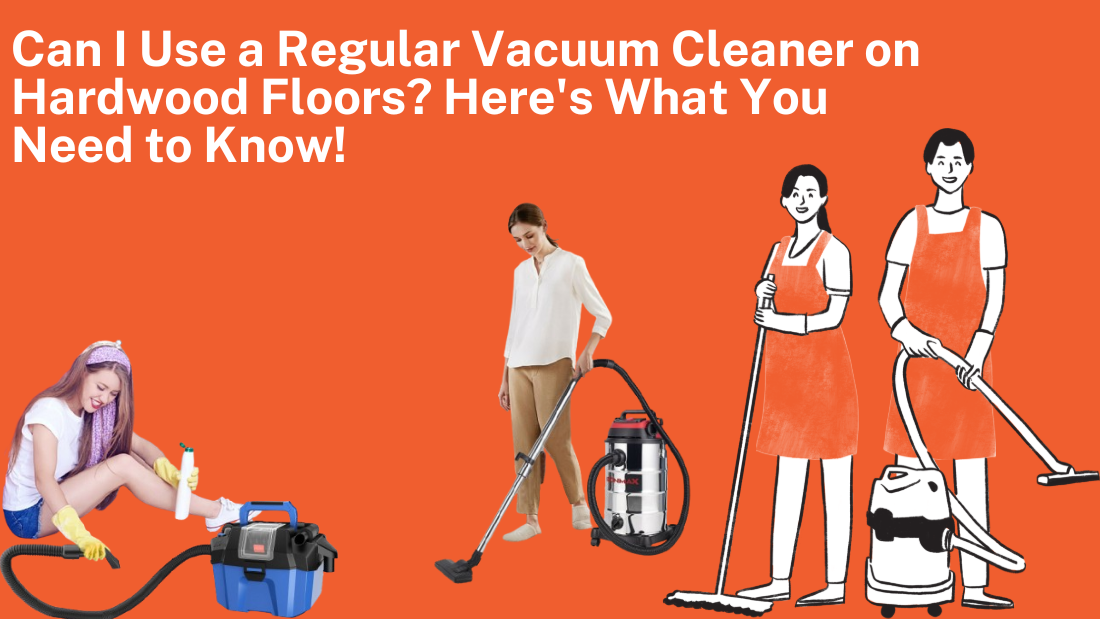Hardwood floors are like the crown jewels of home design. They're elegant, timeless, and they make any space look sophisticated. But let’s face it—keeping them clean can feel like walking a tightrope. One wrong move, and you could end up with scratches or a dull finish. If you’ve ever wondered, "Can I use a regular vacuum cleaner on hardwood floors?" you’re not alone. It’s a common question with a surprisingly nuanced answer.
The short version? Yes, you can—but only if you do it right. Let’s dive into the nitty-gritty and uncover everything you need to know to protect those beautiful floors.
Why Vacuuming Hardwood Floors is a Smart Move
First things first—yes, hardwood floors need vacuuming. Forget the old-school broom routine; it’s inefficient and just pushes dust around. When left unchecked, dirt, crumbs, and debris act like tiny sandpaper on your floor, wearing down the finish over time. A vacuum cleaner is the superhero here, swooping in to remove even the smallest particles.
But here’s the kicker: not all vacuums are created equal. Regular vacuum cleaners can work on hardwood floors, but it depends on how they’re designed. The wrong kind can leave scratches, scuffs, or even damage the finish. That’s why understanding your vacuum’s features is crucial.
Regular Vacuum Cleaners: Friend or Foe?
The term "regular vacuum cleaner" is a bit of a catch-all. It refers to the standard vacuums most of us have at home—uprights, canisters, or stick vacuums designed for carpets and rugs. While they do a great job on plush surfaces, hardwood floors require a gentler touch.
So, are regular vacuum cleaners hardwood-floor-friendly? Let’s break it down:
Beware of the Beater Bar
The beater bar is a rotating brush commonly found in regular vacuums. It’s excellent for digging debris out of carpets but can be a hardwood floor’s worst nightmare. Those spinning bristles can leave scratches or wear down the protective finish. If your vacuum has a beater bar, check if it can be turned off. If not, consider switching to a model with that feature.
Check the Wheels
Wheels are often overlooked but are critical for hardwood floors. Some regular vacuums have hard plastic wheels that can leave marks or scratches. Soft rubber wheels are the gold standard here, as they glide smoothly without causing damage.
Filtration Matters
Hardwood floors tend to accumulate fine dust particles, especially in corners and along baseboards. Vacuums with high-quality filters, like HEPA filters, trap dust effectively instead of blowing it back into the air. A regular vacuum cleaner with excellent filtration can make a big difference in keeping your floors dust-free and your indoor air quality high.
Features to Look for in a Hardwood-Friendly Vacuum
If you’re using a regular vacuum cleaner for hardwood floors, it’s time to do a quick audit. Here’s what to look for to make sure you’re not unknowingly damaging your flooring:
Adjustable Suction Power
Hardwood floors don’t need the same suction intensity as carpets. Look for a vacuum with adjustable suction settings so you can lower the power when cleaning delicate surfaces.
Bare Floor Setting
Many regular vacuums come with a bare floor mode that disables the beater bar and adjusts suction for hard surfaces. This is a must-have if you want to clean your hardwood floors without a hitch.
Soft Bristle Attachments
Using attachments with soft bristles allows you to clean corners, crevices, and baseboards without scratching your floor. Many regular vacuum cleaners come with these tools, so take advantage of them!
Lightweight Design
Dragging a heavy vacuum across hardwood can be risky. Lightweight models are easier to maneuver and less likely to leave scuff marks.
Tips for Vacuuming Hardwood Floors Like a Pro
So, you’ve determined that your regular vacuum cleaner passes the hardwood floor safety test. Great! Now, let’s level up your cleaning game with these tips:
Remove the Roller Brush
If your vacuum allows you to detach the roller brush or beater bar, do it. No brush, no scratches—it’s that simple.
Use the Right Attachments
Soft bristle tools and floor-specific attachments can give you more control and precision when cleaning. They’re perfect for picking up fine dust and pet hair.
Follow a Consistent Pattern
Vacuuming in straight lines rather than random movements ensures you don’t miss any spots. Plus, it minimizes the risk of over-vacuuming one area.
Go Cordless (If Possible)
Cordless stick vacuums are a dream for hardwood floors. They’re lightweight, easy to maneuver, and don’t require you to drag a power cord across the room.
Don’t Skip Under the Furniture
Dust loves to hide in places you don’t usually see. Use your vacuum’s crevice tool to clean under couches, chairs, and tables. This extra step can make your entire home feel fresher.
When to Consider Upgrading Your Vacuum
If your current regular vacuum cleaner doesn’t meet the hardwood-friendly criteria, it might be time to upgrade. Modern vacuums designed for multi-surface cleaning often come with advanced features like:
- Soft rollers specifically designed for hard floors.
- Auto-adjusting heads that adapt to different surfaces.
- Silent operation, so you can clean without disrupting your household.
Investing in a vacuum tailored to hardwood floors can save you a lot of stress (and repair costs) down the road.
Final Verdict: Yes, You Can Use a Regular Vacuum Cleaner on Hardwood Floors!
Here’s the bottom line: A regular vacuum cleaner can work on hardwood floors, but only if it’s used thoughtfully. Take the time to assess your vacuum’s features and make adjustments as needed. Turn off that beater bar, use soft-bristle attachments, and ensure the wheels are hardwood-safe.
Your hardwood floors are an investment, and they deserve to be treated with care. With the right approach, you can keep them looking flawless for years to come—and all it takes is a little vacuuming finesse.






